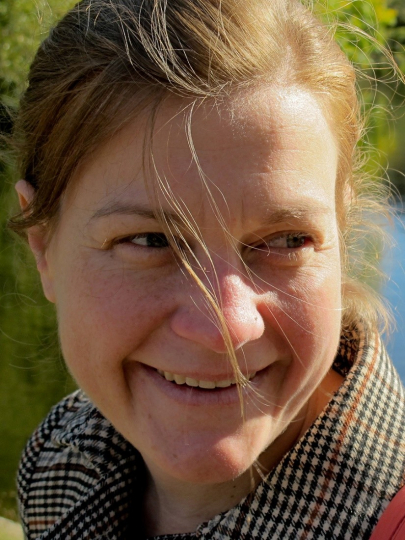Vanessa RibesInstitut Jacques Monod - CNRS / Université de Paris
Mes recherches
Les projets de mon équipe se penchent sur les processus moléculaires et cellulaires qui régulent le destin des cellules de la moelle épinière embryonnaire et comment ces processus sont réutilisés lors de la transformation de cellules vers un état tumoral. Durant ma thèse à l’IGMC à Strasbourg sous la direction de Pascal Dollé puis mon post-doctorat au NIMR à Londres dans le laboratoire de James Briscoe, je me suis intéressée aux liens entre spécification cellulaire et dynamiques temporelles et spatiales dans les voies de signalisation par l’acide rétinoïque et Sonic Hedgehog. En 2011, je suis entrée à l’INSERM en tant que chargée de recherche dans l’équipe de Frédéric Relaix, à l’Institut de myologie UMR787. J’y ai développé un projet singulier sur les facteurs de transcription Pax3 et Pax7 et le développement de la moelle épinière, qui m’a permis d’obtenir l’ATIP-Avenir en 2014. Grâce à ce financement, j’ai monté l’équipe « Réseaux transcriptionnels et destins cellulaires » à l’institut Jacques Monod à Paris en 2015. Après avoir développé plusieurs modèles originaux s’appuyant sur l’utilisation de cellules souches murines et humaines et l’embryon de poulet, nous cherchons actuellement à déchiffrer les mécanismes qui modulent l’activité transcriptionnelle de Pax3 et Pax7 et qui créent de la diversité cellulaire au sein du neuro-épithélium ou qui déclenchent un cancer pédiatrique nommé Rhabdomyosarcome alvéolaire.
Mon projet ATIP-Avenir
Structure and emergent properties of transcriptional regulatory circuits centered on Pax3 and Pax7 underpinning the formation of dorsal spinal interneurons
Throughout development the timing of gene activation or repression is essential to coordinate basic cellular processes. This highly depends on the integration of combinatorial inputs from transcription factors (TFs) onto cis-regulatory modules (CRMs). The nature and strength of all the possible TFs-CRMs interactions, termed transcriptional regulatory network (TRN), within a given cell lineage are believed to be responsible for the transcriptomic spatio-temporal dynamics underpinning the differentiation of this lineage. Thus, a major challenge in developmental biology is to characterize the features of TFs-CRMs interactions of lineage specific TRN to be able to decipher the emergent properties emanating from these interactions. We propose to address these issues using as a model the vertebrate neural tube, as the TRN members that orchestrate the patterned differentiation of this tissue have been partially characterized. Our project aims to assess how the activity of two key paralogue TFs within this TRN, Pax3 and Pax7, is integrated at the genome level to trigger the transcriptomic landscape changes guiding the dorsal spinal cord development. First, we propose to identify the molecular mechanisms by which the transcriptional activity of these two proteins is modulated in this tissue and to characterize the biological relevance of the modular aspect of their activity. Second, by combining ChIP-Seq experiments for these TFs and their co-factors and expression profiling experiments by sampling wild-type and mutant neuroprogenitors, we aim to establish the links between the Pax3/7 and other TRN members. Third, we will develop new computational methods to define the structure of sub-circuits within spinal TRN from the combined analysis of these two data sets. Overall, we expect the project to make significant contribution in understanding on how TRNs control pattern formation and also to lay essential baselines for future directions to study their properties
